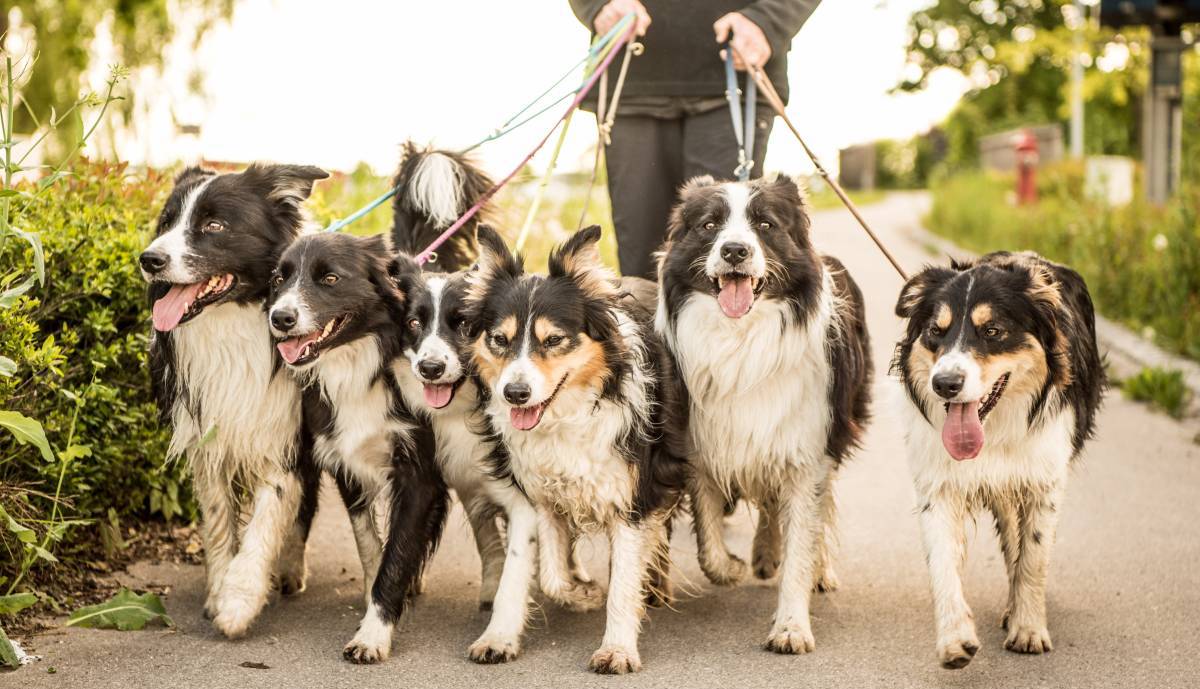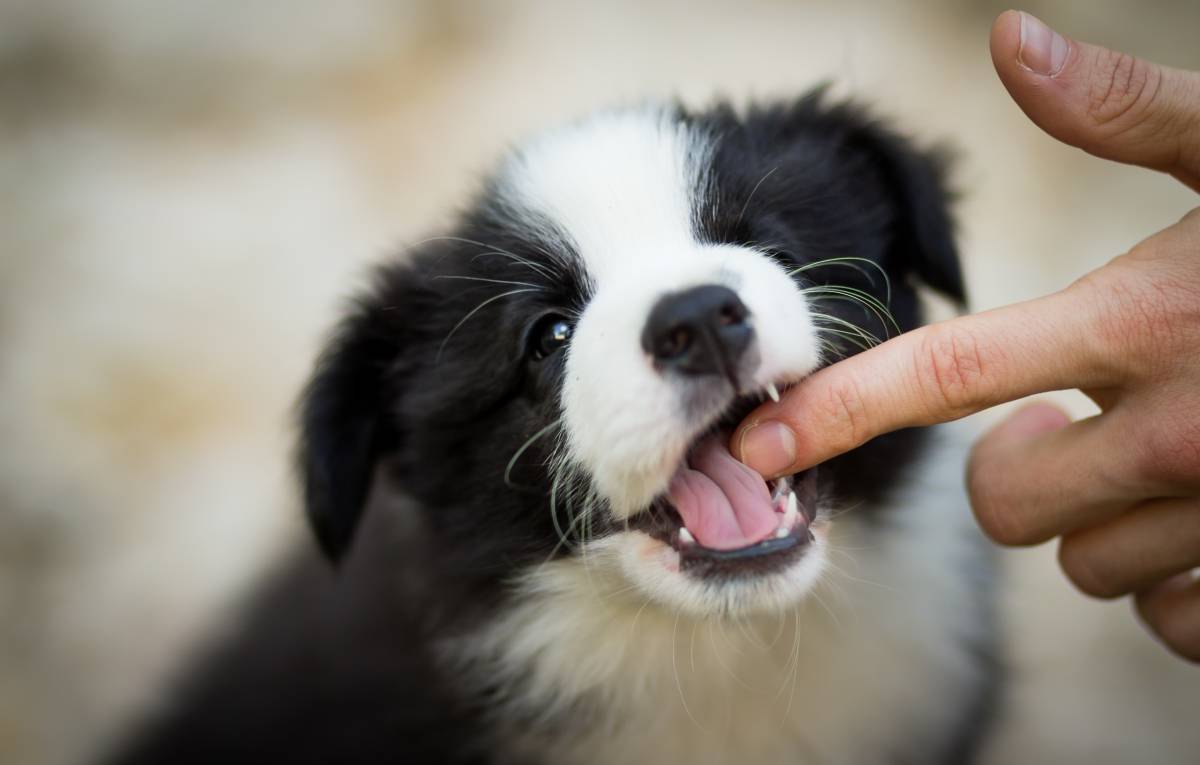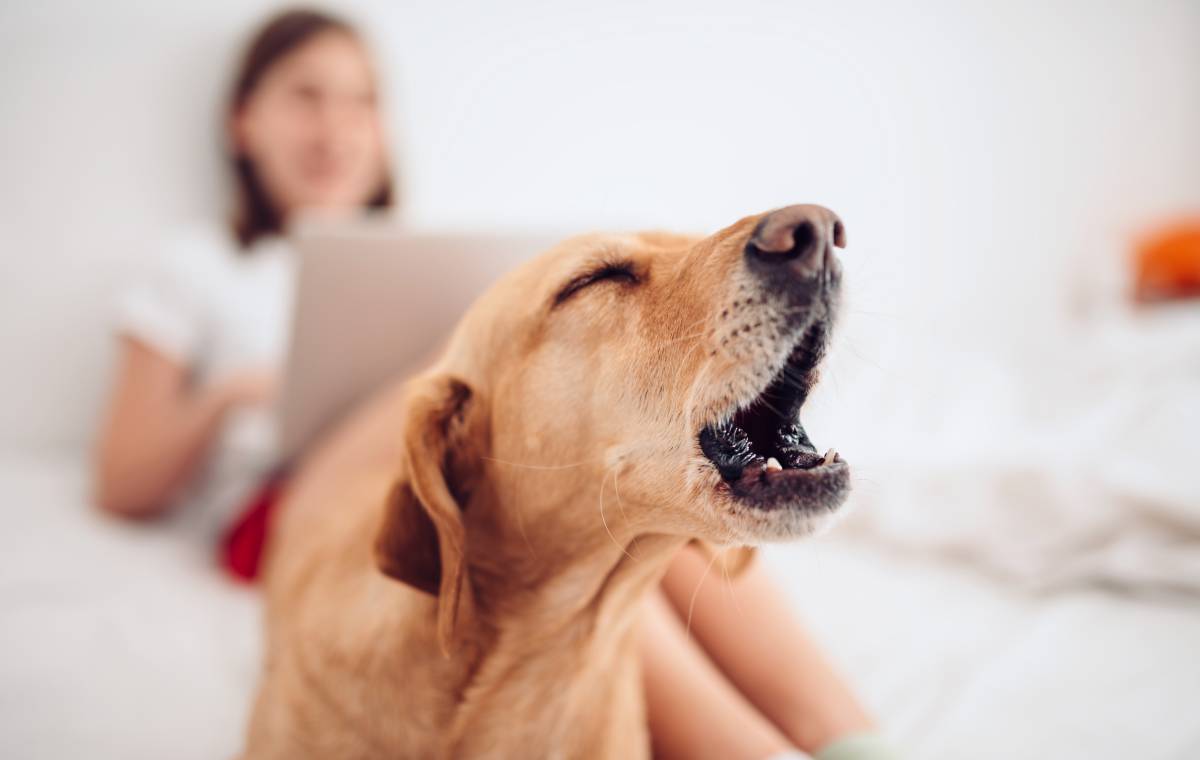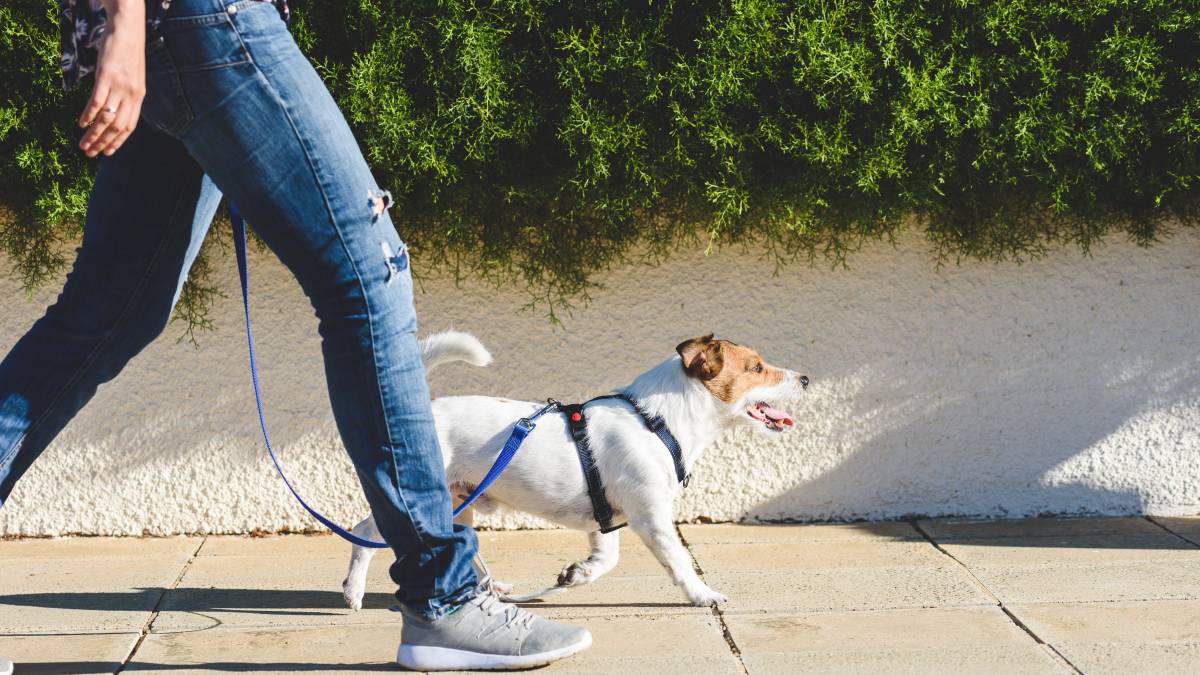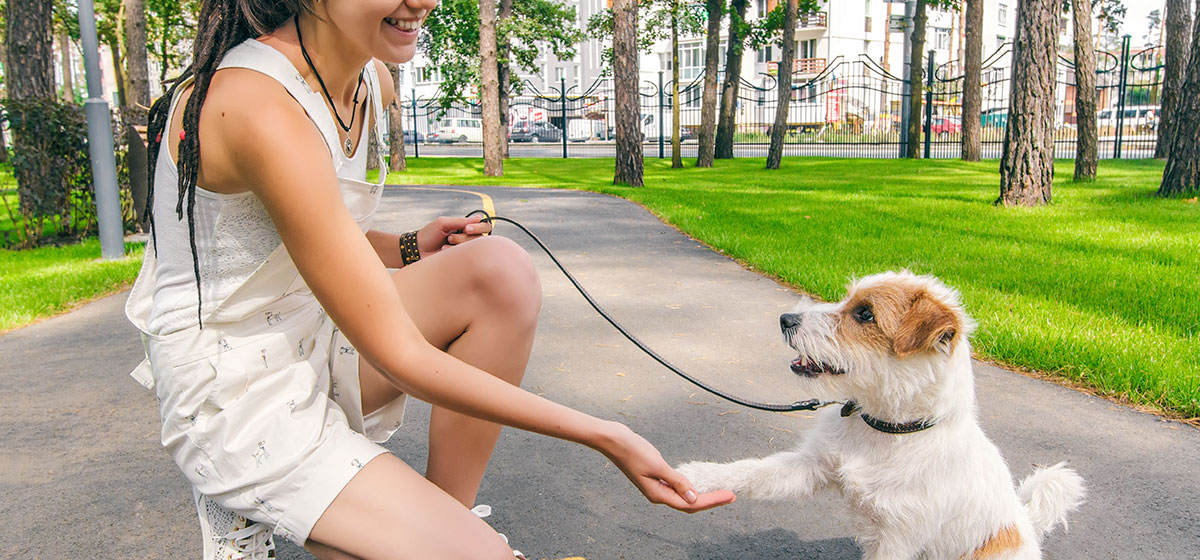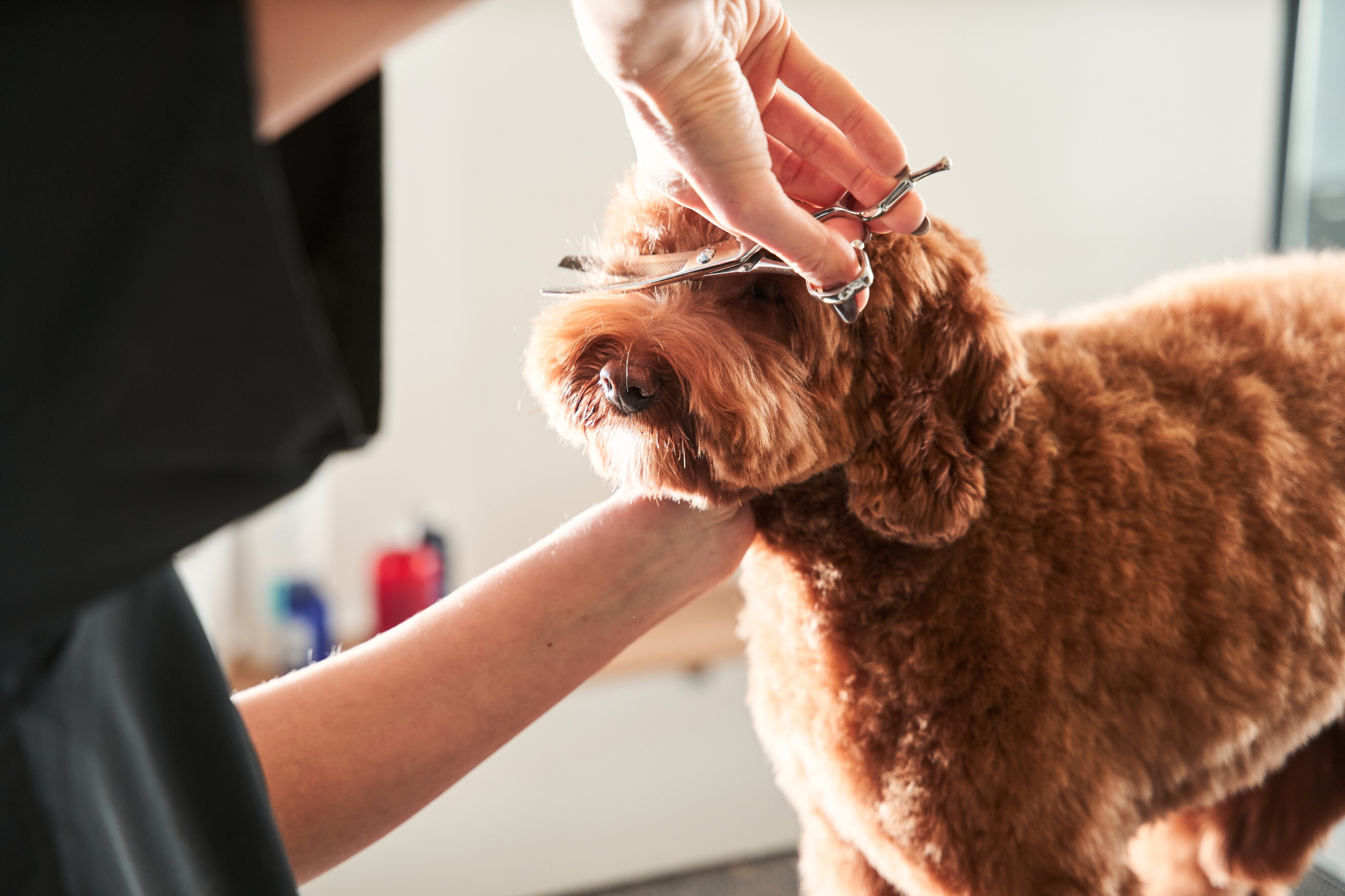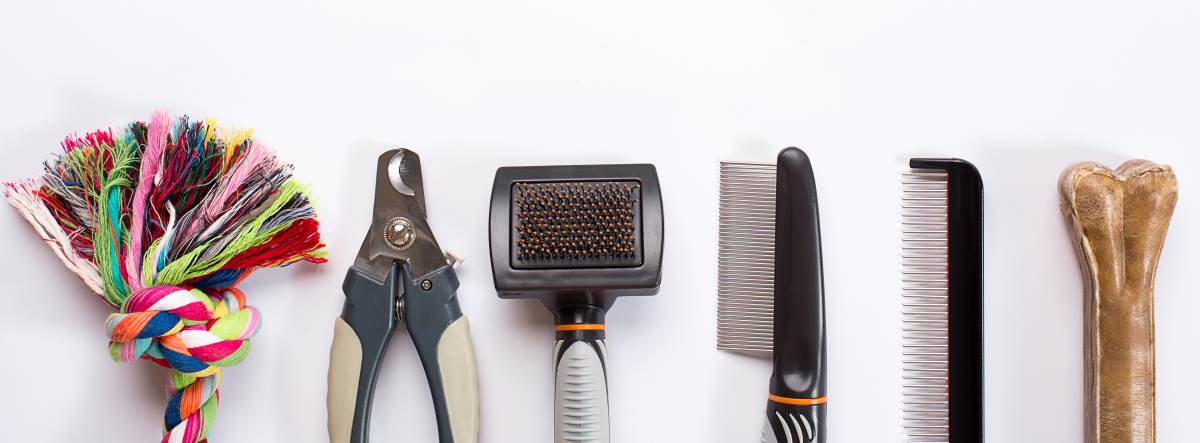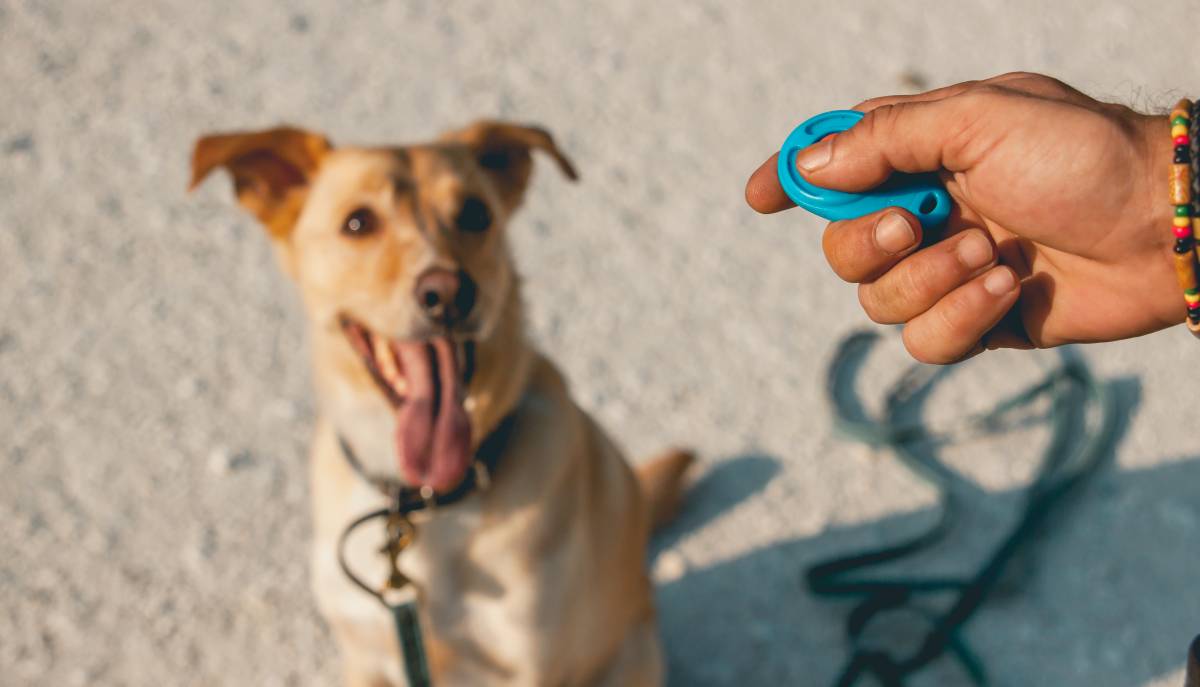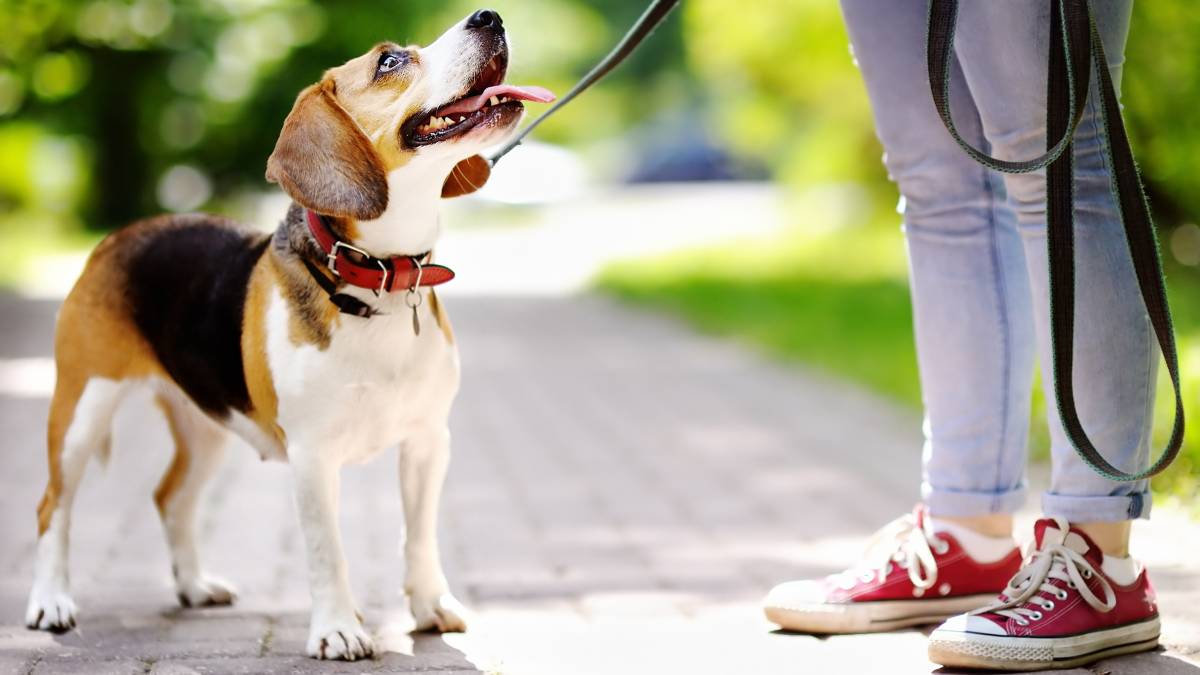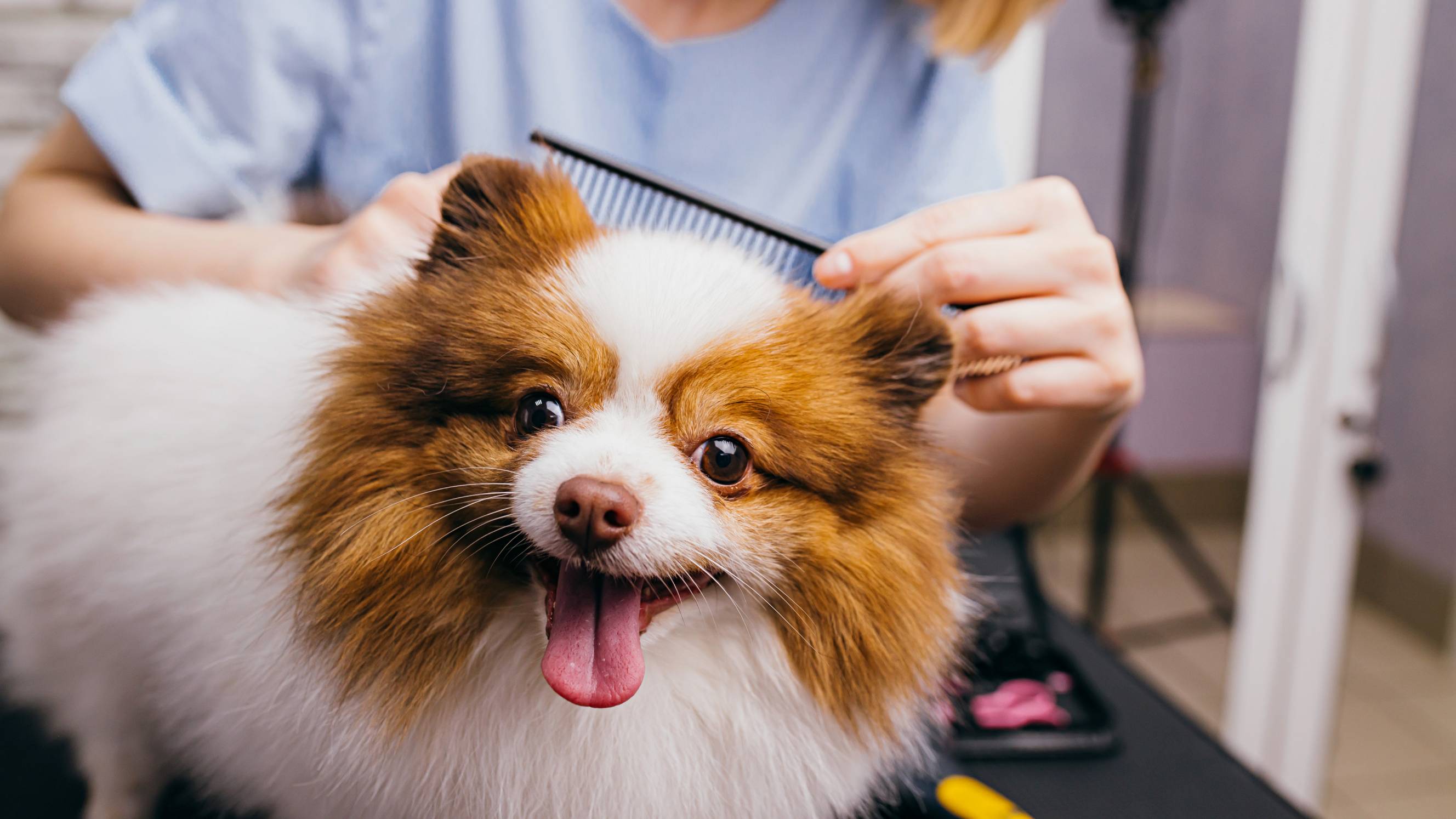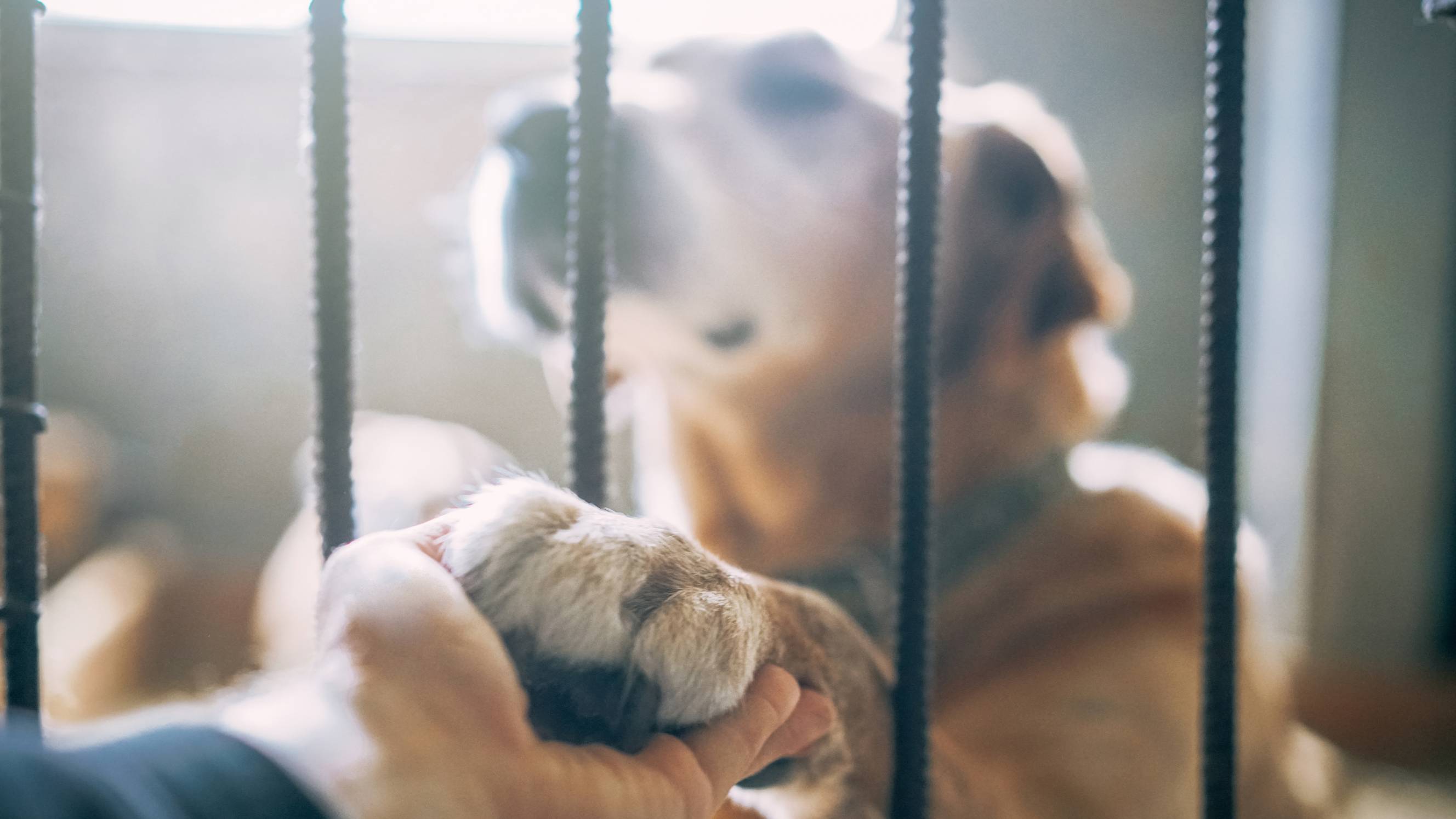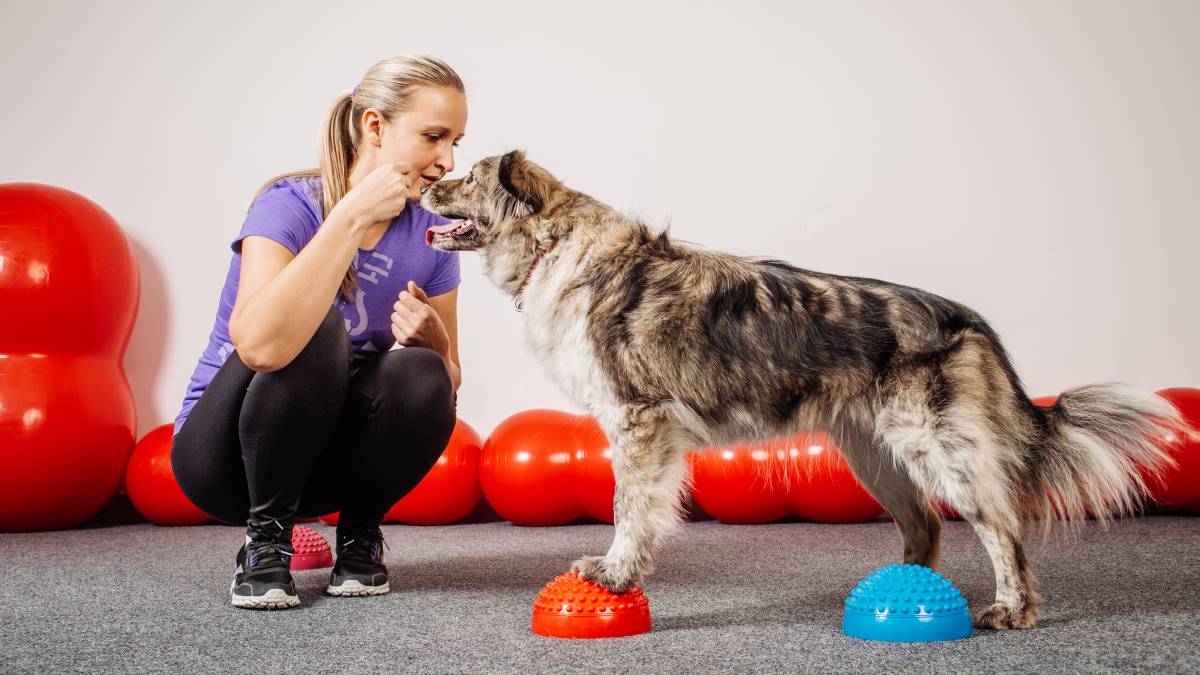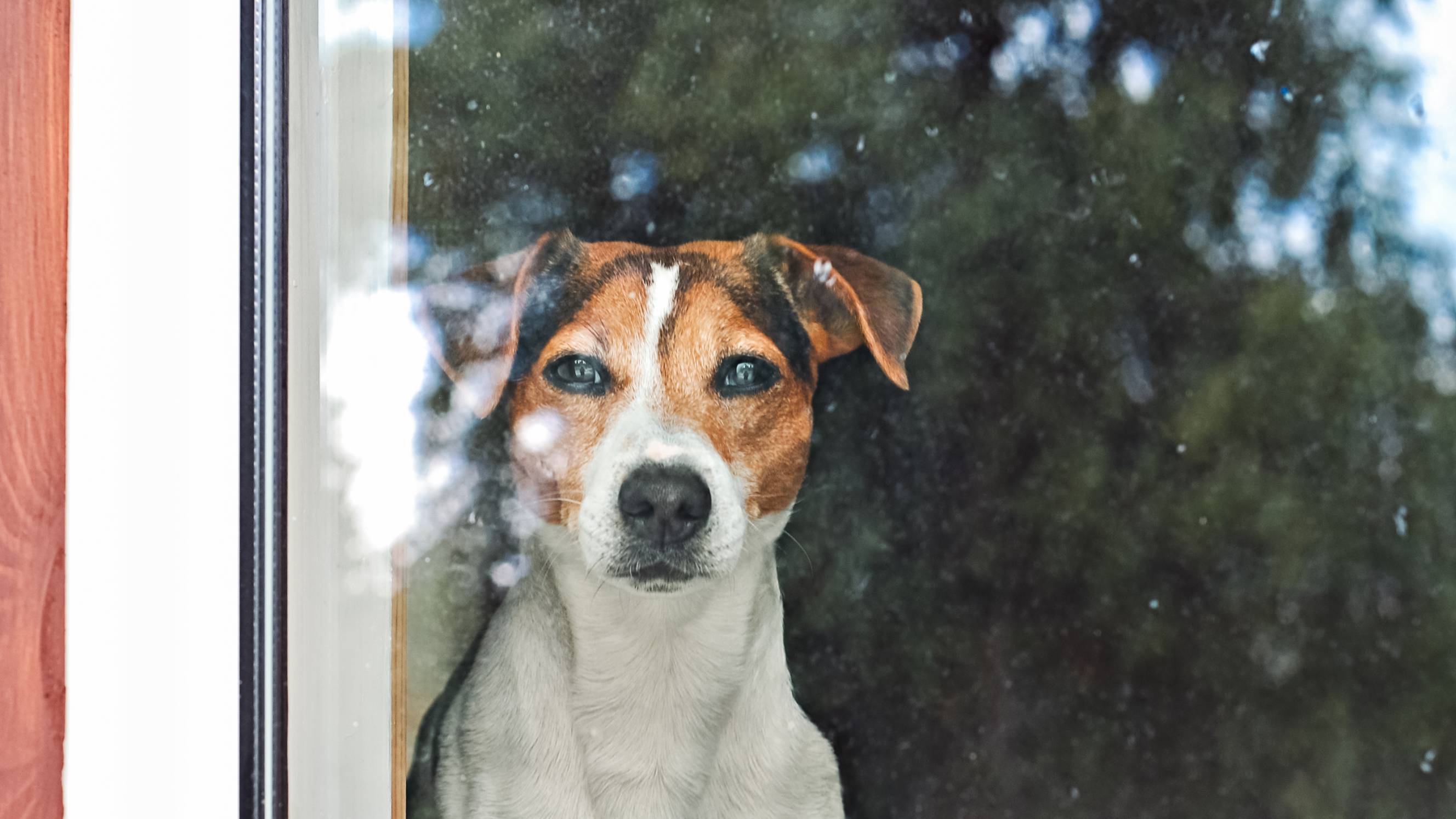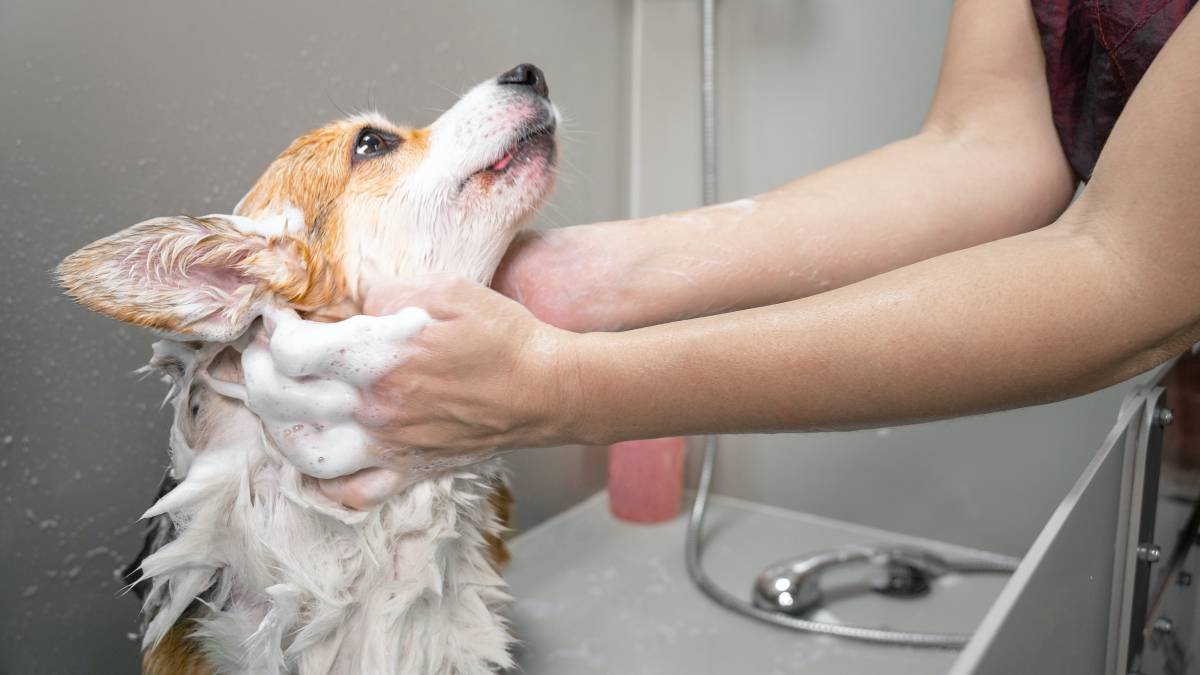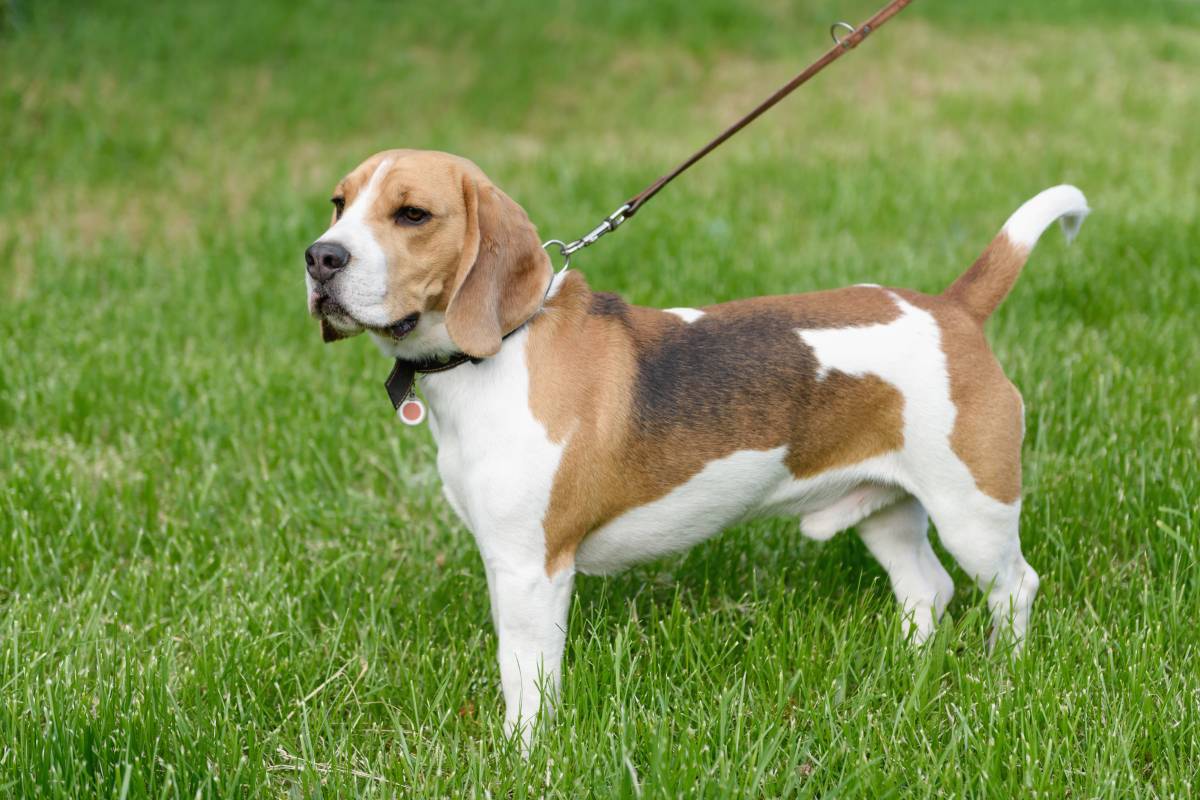
- Home/
- Guides/
- Dog Training/
- Leash Training a Dog
How to leash train a dog – Tips and techniques
With ample practice, you can train your dogs to become a well-mannered companion accustomed to walking with a leash.
Last Updated on

Written by Cielo B.
Staff Writer

Reviewed by Ella W.
Dog Expert
Read more about our contributors
Key Facts
Dogs can learn to walk calmly on a leash with the right mix of treats, praise, and consistent short training sessions.
Leash training usually starts indoors to help dogs associate the leash with positive experiences before facing distractions outside.
Using a cue word or clicker helps reinforce desired behaviour and improves communication between you and your dog.
Training your dog to walk on a leash is essential, especially with strong dogs. It prevents them from lunging, pulling, or overreacting to other dogs, making your walks safer and more enjoyable for both of you.
Fortunately, you can teach your furbaby to behave well on a leash, and you don’t have to be an expert dog trainer to do so. Just follow this step-by-step guide on how to train your dog to walk on a leash!
What you’ll need for leash training your dog
Knowing how to train a dog to walk on a leash and having them behave while you walk them isn’t as hard as you think. Here’s what you need:
Your dog’s favourite treats
A dog harness or slip lead
Plenty of patience and praise
How long does it take to leash train a dog?
Training your dog to walk on a leash can take an average of 4 to 6 weeks, with daily training sessions of at least 5 minutes.
Leash training your dog can take more or less time, depending on your dog’s age, temperament, and consistency of their training. Your pooch can learn how to behave well on a leash quickly if they receive regular training along with consistent praise and their favourite treats as rewards.
To ensure your dog has consistent practice, you can hire a dog trainer or dog walker to help leash train your dog if you don’t have the time.
How to train a dog to walk on a leash
With some patience and consistency, your daily dog walks will be enjoyable and stress-free. Here’s a quick guide on proper leash training for dogs.
Step 1: Introducing the leash or harness
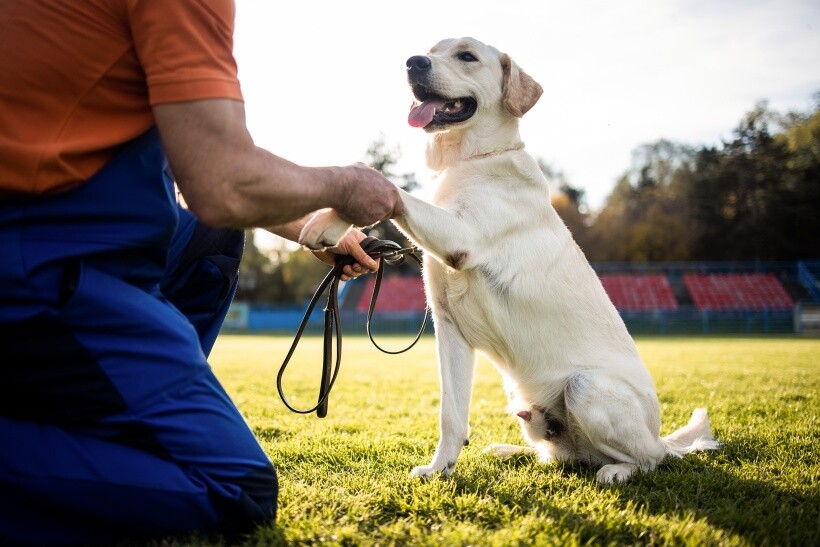 A Labrador demonstrates focus during leash training exercises. (Source: iStock)
A Labrador demonstrates focus during leash training exercises. (Source: iStock)
The first step in training your dog to walk on a leash is getting them used to the collar and leash. Your doggo may not like having a foreign object placed on them, so gently put on the leash and ready your dog’s favourite toy and treats. Reward your dog with a treat and play with them for a few minutes. The trick is to have your dog associate the leash and collar or harness with food and fun!
You could start leash training at home: Put the leash on and slowly drag your dog behind while you wander around the house. Do this for about half an hour until the dog gets comfortable walking around with the leash.
Step 2: Teaching your dog their cues
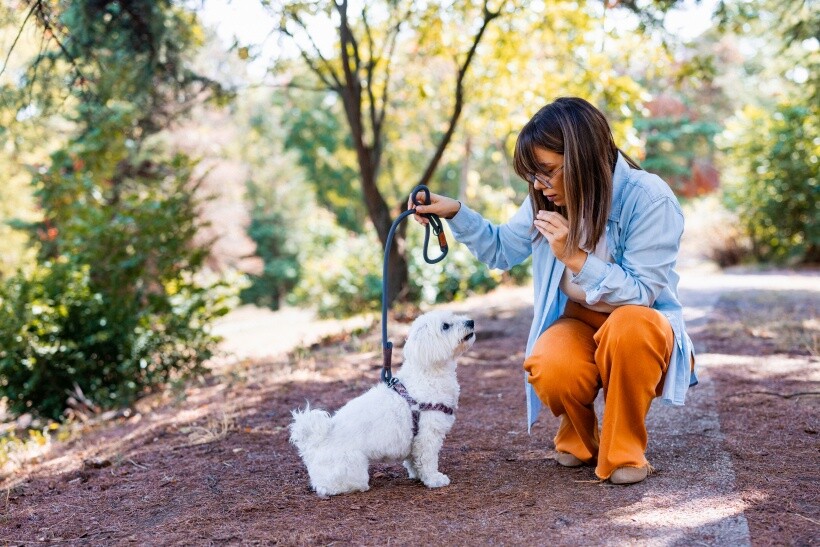 A dog responds to leash training cues in a park. (Source: iStock)
A dog responds to leash training cues in a park. (Source: iStock)
Teach your dog their “cue” in a quiet area that’s free of distractions.
You can use a clicker or a word. Saying its name is a common cue to get your dog’s attention. Don’t say ‘yes’ as a cue because we use it for everyday speech; it can confuse the dog.
Reward your dog with a treat when your dog looks at you after you use the clicker or make the sound.
Do this step a few times, and you’ll notice your dog turn to you and expect a treat as soon as you make the sound.
Step 3: Making your dog come to you
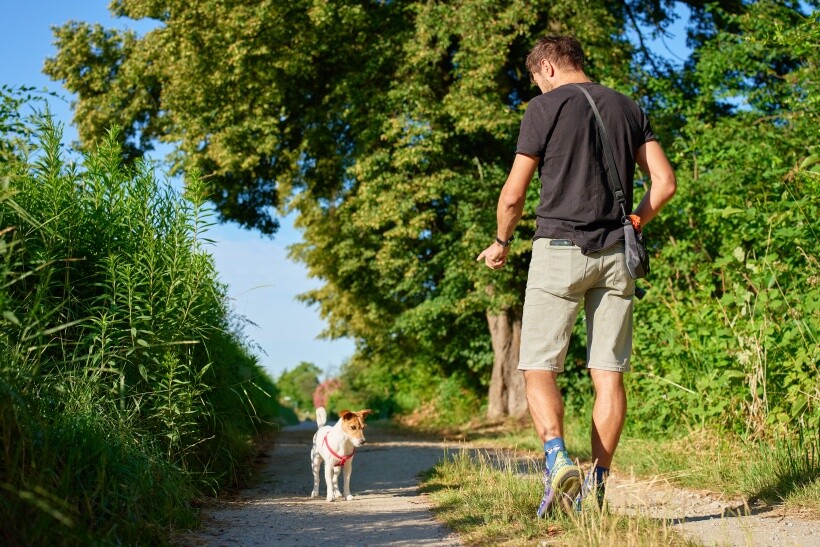 A dog participates in leash training along a wooded trail. (Source: iStock)
A dog participates in leash training along a wooded trail. (Source: iStock)
Now, it’s time to teach your dog to come to you on cue.
After using your cue sound a few times, back up a bit and extend the leash to make your dog approach you for their reward.
Repeat this process until you can stand a few steps away from your pooch, and they come to you on cue.
Don’t forget to reward and praise your dog with “good boy/girl!” Your praise should eventually become the “treat” your dog works to earn; In the long run, giving treats to your dog every time they come to you may make them overweight!
Alternatively, you can use a ‘clicker’ to teach the dog to come on cue. Here’s how to do it: Every time you click, give your dog a treat. Eventually, your dog will associate the clicker noise with a reward. Slowly introduce commands during clicker training until your dog gets used to it.
Step 4: Leash training your dog indoors
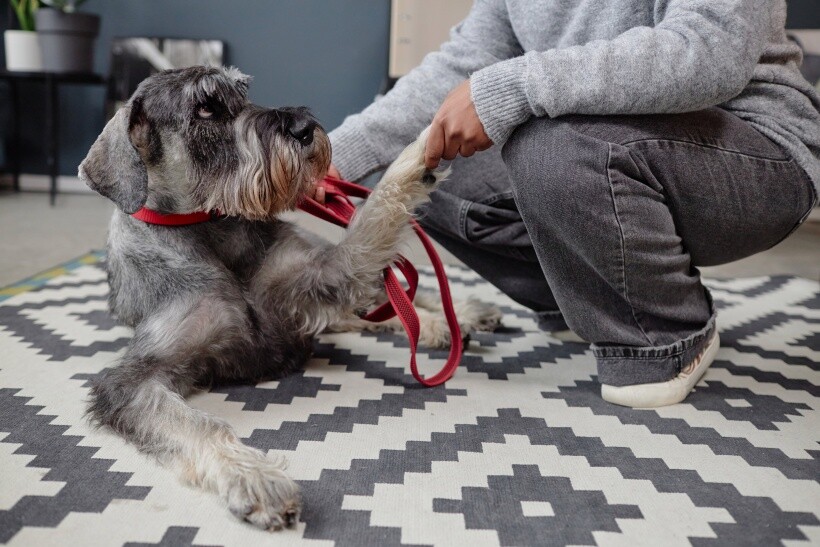 A Schnauzer practices leash training indoors. (Source: iStock)
A Schnauzer practices leash training indoors. (Source: iStock)
Now that your dog knows to look and come to you on cue, reinforce this behaviour by putting on the leash then walking a few steps with your dog by your side.
Make the cue sound, and don’t forget to give treats and praise as your dog responds. Do this in a room or indoor space with no obstructions or distractions.
Pick the side you want your dog to walk on, and don’t switch sides in future sessions; Switching sides can confuse your dog.
Keep these practice sessions regular but short as these can be mentally exhausting for your dog.
Step 5: Taking the leash training lessons outside
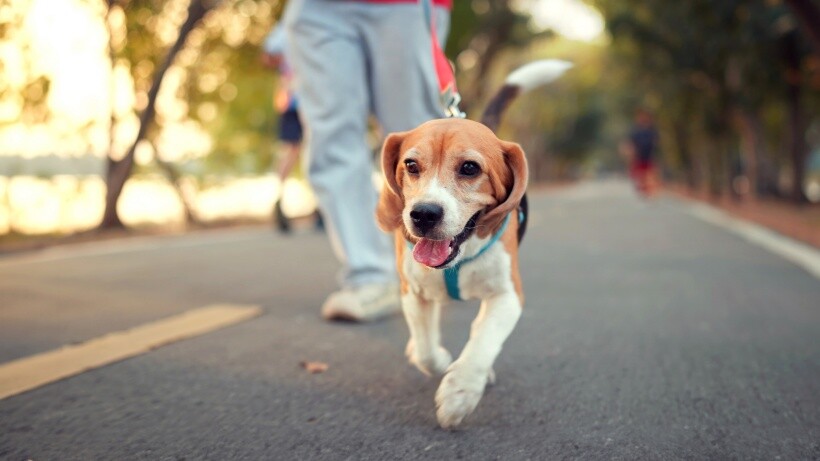 A beagle practices proper leash walking on a quiet path. (Source: iStock)
A beagle practices proper leash walking on a quiet path. (Source: iStock)
After a few days of leash training your dog indoors, you can take them out for a walk.
Be patient with your dog and keep the walk short. Other dogs, cars, people, and different scents are a lot for your dog to take in and process.
You can expect your dog to get distracted, so use your cue word and reward them with treats and praise for behaving as they walk by your side.
Don’t worry if you can’t take your dog for a walk every so often to ensure they get their exercise. You can always hire someone to walk your dog. If you have to leave your dog for extended periods, you can hire a pet sitter to look after them.
Is it too late to leash train my dog?
Your dog can never be too old to get leash trained. The saying, “You can’t teach an old dog new tricks” isn’t always true. Many dog trainers may say it’s best to start leash training a dog when they’re at least 12 weeks old and have had their shots. But older dogs are also capable of being leash trained.
Give your older dog time and patience, and adapt to what motivates your dog to follow commands. Eventually, your dog will learn to walk calmly on a leash without pulling.
Get extra help from an expert dog trainer
With enough practice, you can train your pooch to become a well-mannered companion accustomed to walking with a leash. But if you lack the time, tools, or patience to leash train your dog, you can always hire a professional dog trainer at a reasonable rate. Don’t put off your dog’s leash training; Post a task today!
Learn more about our contributors

Written by Cielo B.
Staff Writer
Cielo is an experienced content writer who has explored various industries throughout her career. Her expertise, founded on a degree in journalism, includes writing about automotive and home maintenance. Cielo also covers topics like dressmaking, tailoring, and photography since she is a passionate cosplayer who enjoys dressing up as her beloved anime characters.

Reviewed by Ella W.
Dog Expert
Ella is a dog owner and part-time dog walker. Having used dog walking and doggy daycare services as a client for her own dog while also working as a professional dog walker in London and Oxfordshire, she has been on both sides of the transaction— she understands and is knowledgeable of the nuances of the service offered. She takes pride in listening to dog owner’s requests and getting to know each dog as an individual, prioritising each dog’s happiness and safety.
The Reviewer Badge is awarded to individuals who are experts in their respective fields and evaluate the content to ensure its accuracy and relevance to the task at hand.
FAQs
A dog harness is better for leash training because it provides better control. Plus, a harness reduces neck strain and discourages pulling, helping dogs feel comfortable during walks.
Although a collar could be an option, it should be worn with a harness. Using a collar alone can choke dogs if they suddenly pull or lunge during training.
Most first-time dog owners tend to walk too slowly while training their dog on a leash, thinking this would help with the training. However, this does the opposite because it makes it more difficult for the dog to match their speed, causing the dog to pull more. Maintaining a natural walking pace is a better technique than slowing down each step.
You’ll also want to discourage your dog from pulling while walking, as this rewards unwanted behaviour. Instead, stop walking immediately if you feel the leash tighten and wait for your dog to return or loosen the leash before continuing. Reward your dog once it has returned to your side, especially if you have asked it to do so with a voice command, such as calling its name or using a cue by saying 'heel'.
Stop walking when your dog pulls and only resume once they’ve calmed down or come back to your side. Consistent training, rewarding calm behaviour, and using a no-pull harness can also help.
Find dog trainers, fast
Find a Dog Trainer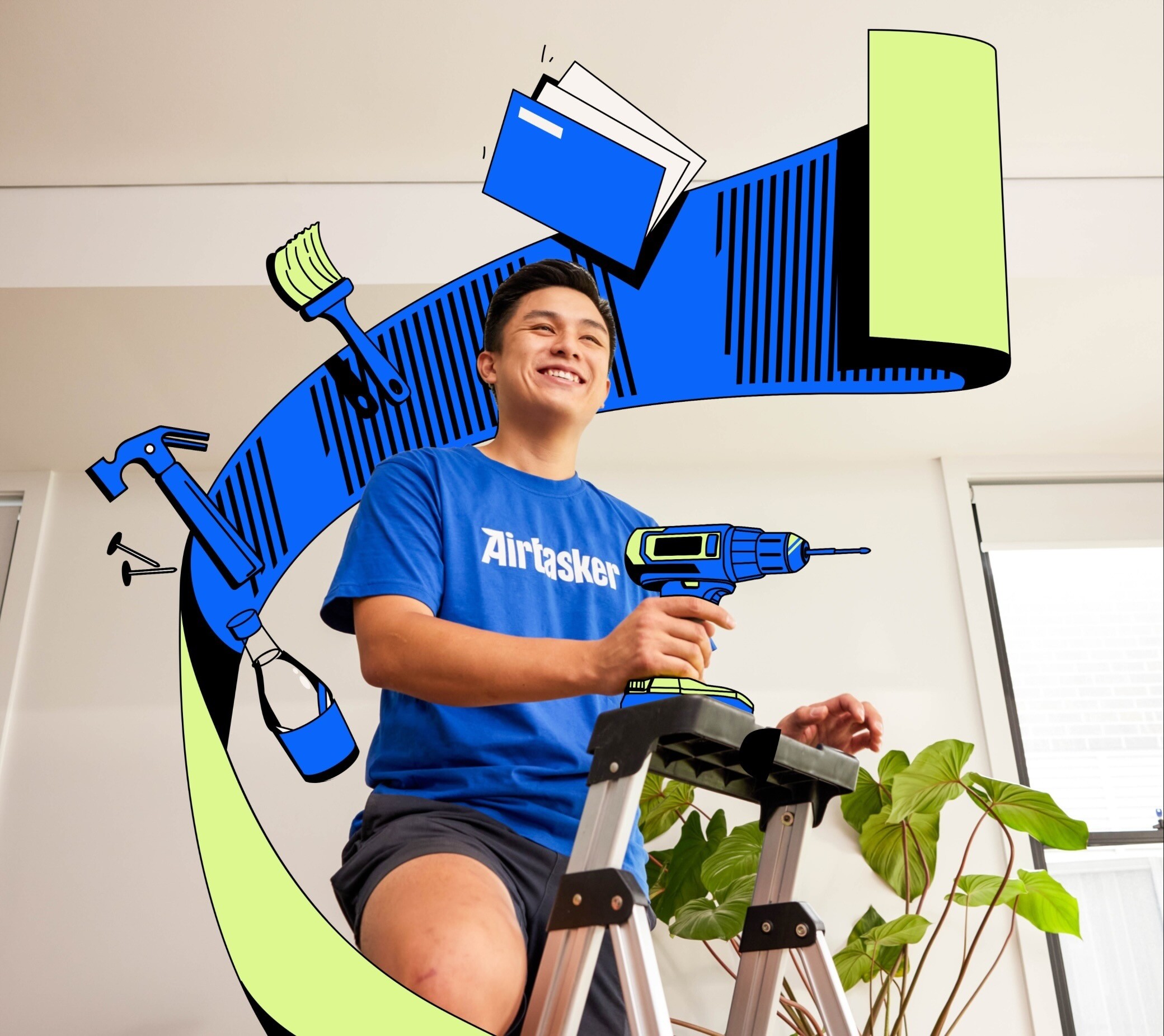
Related articles
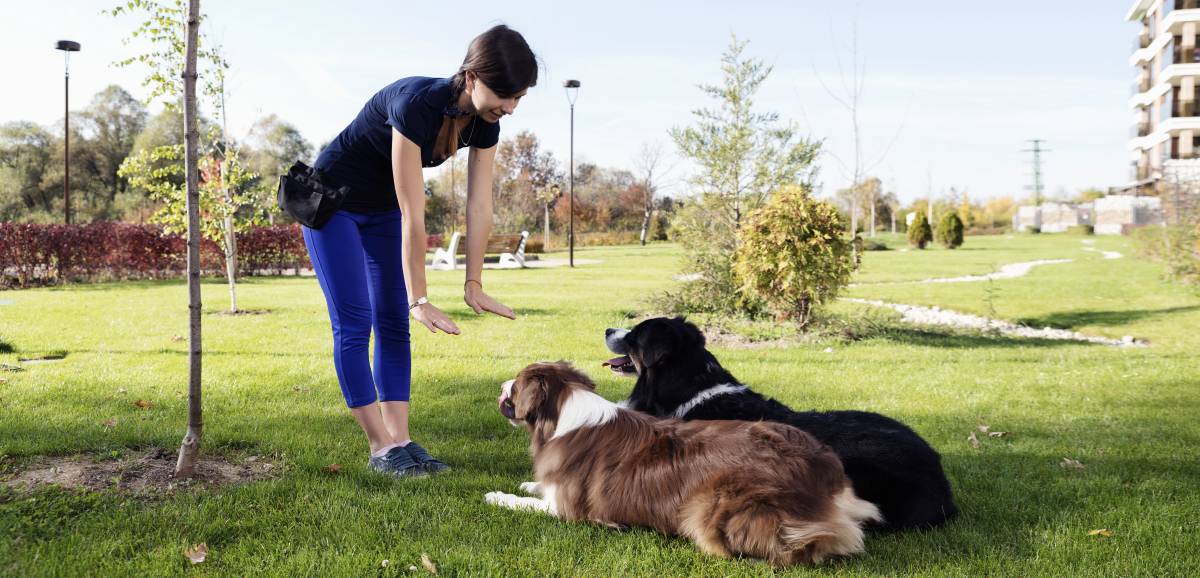
Dog training 101: How to train your dog
Read more
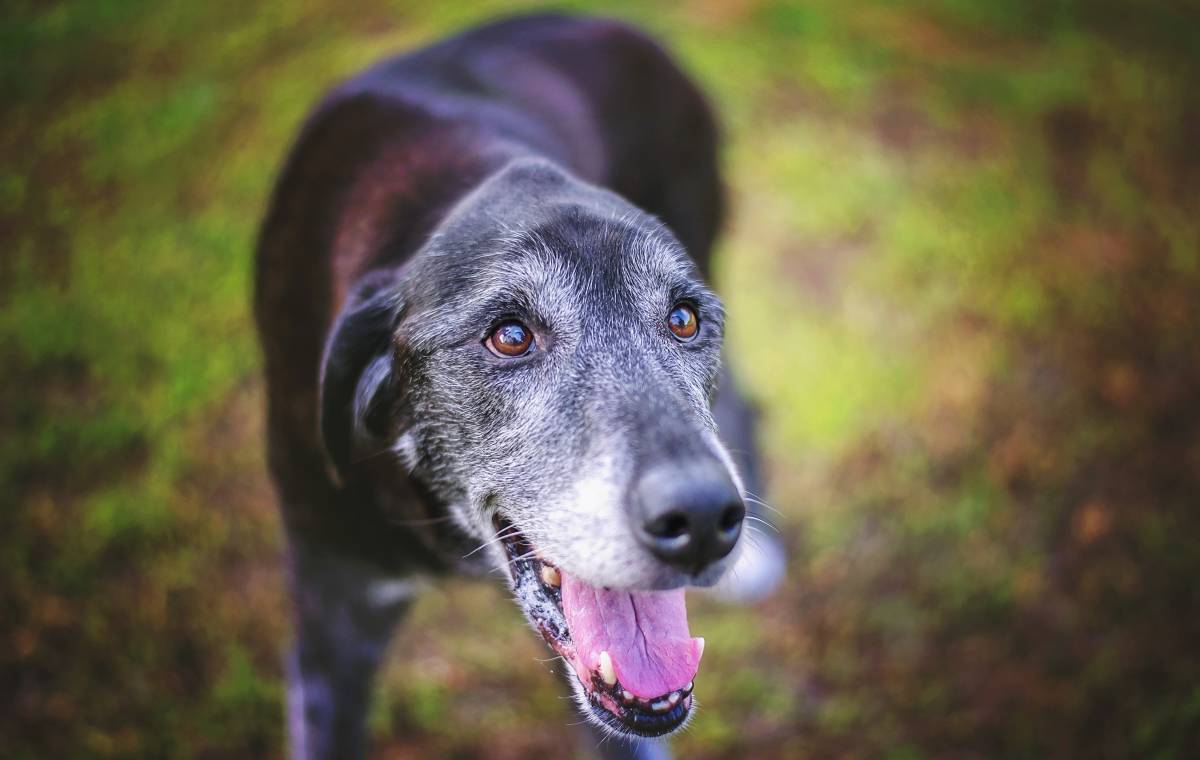
Tips for training an older dog
Read more

Your ultimate guide to dog care
Read more
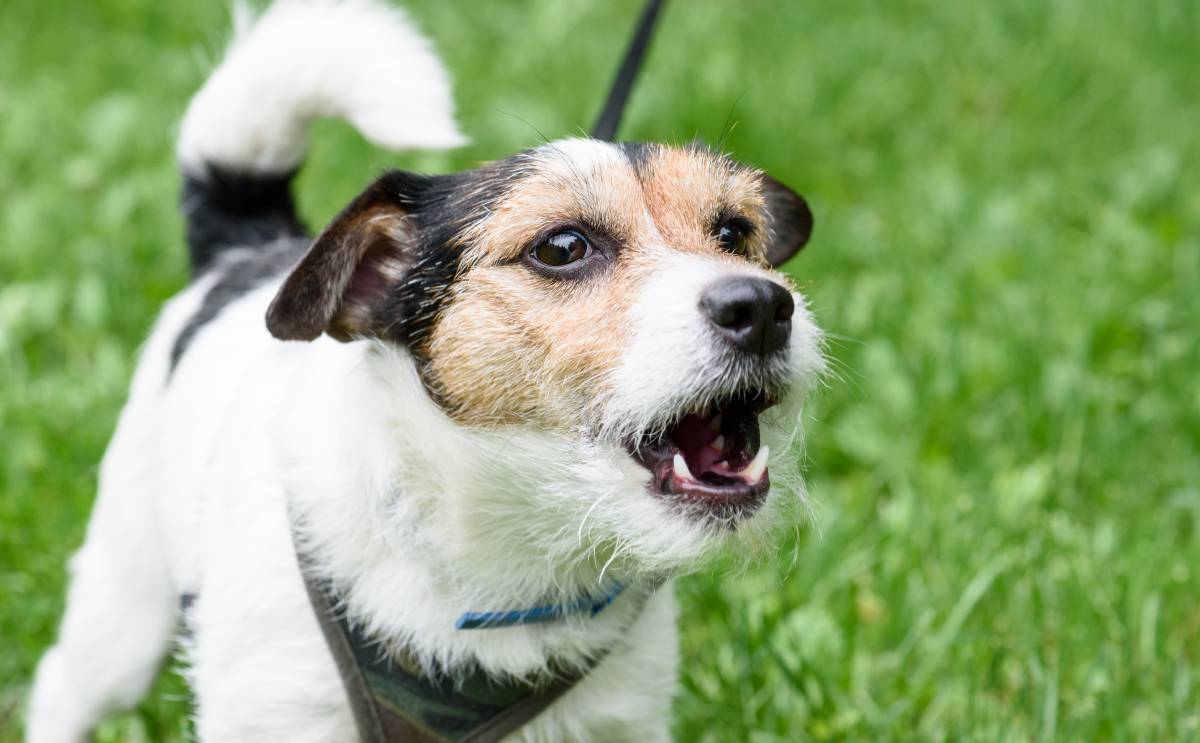
Reactive dog training tips
Read more
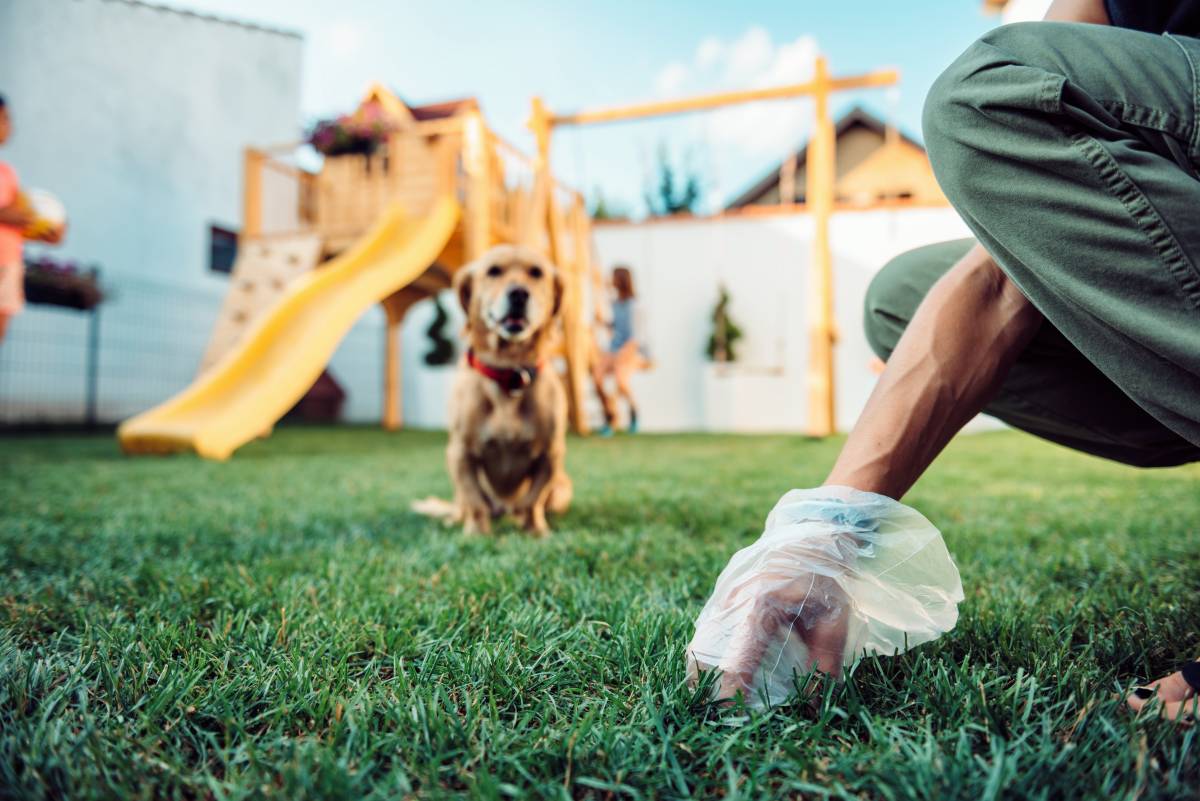
3 Effective ways to house train a dog
Read more
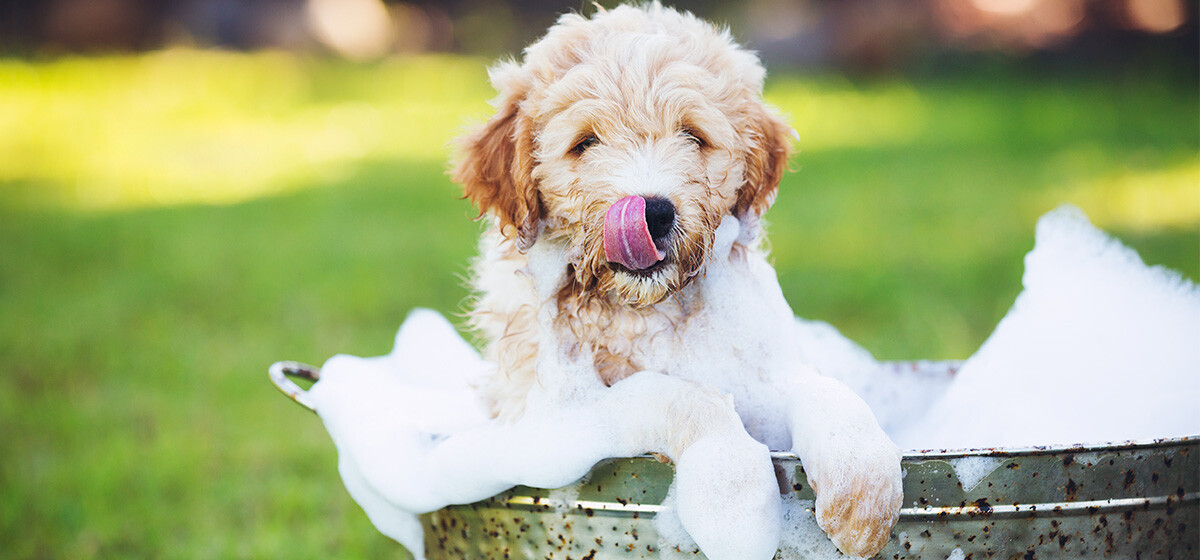
How often should you wash your dog
Read more
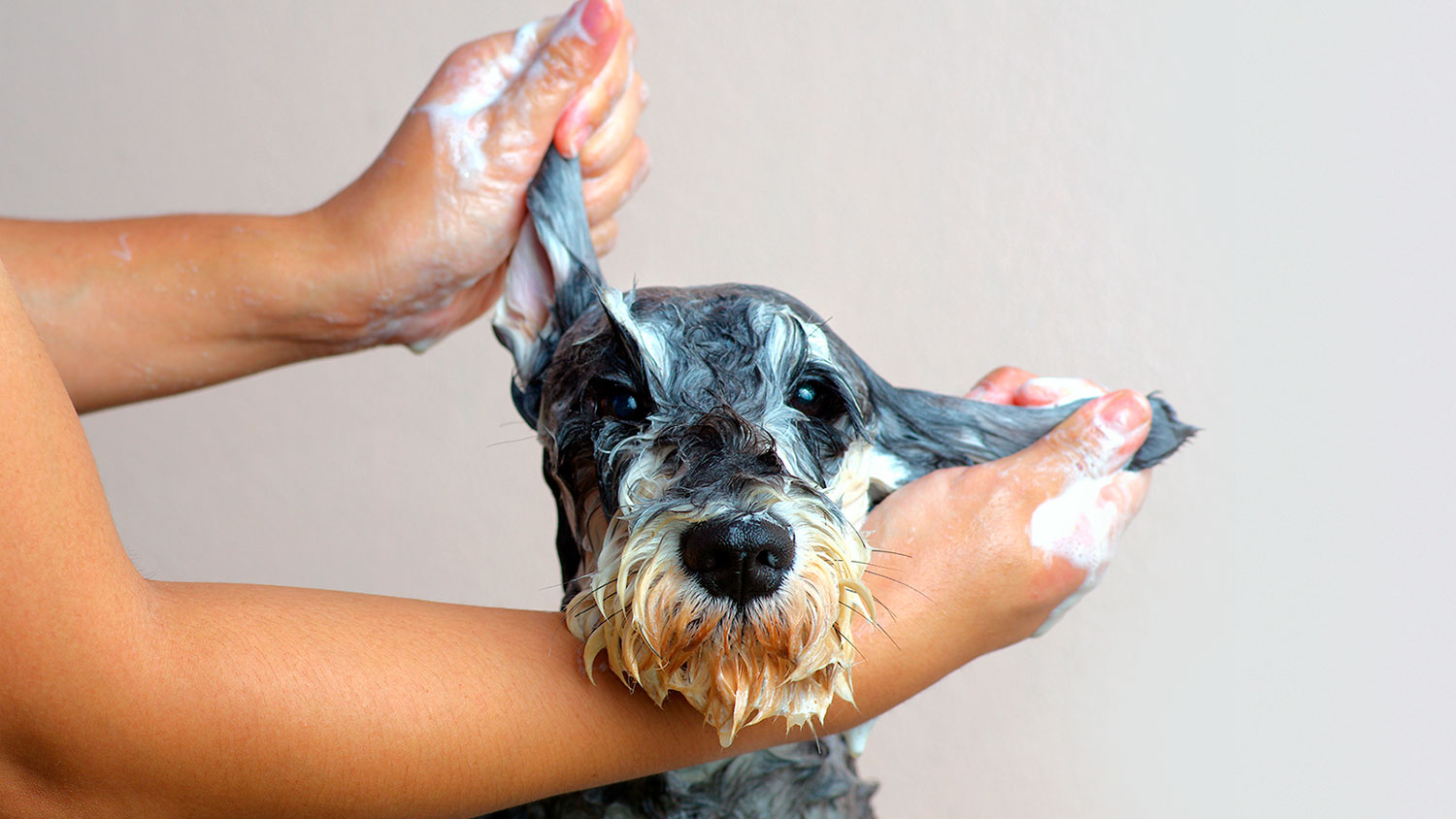
How to bathe your dog like a groomer
Read more
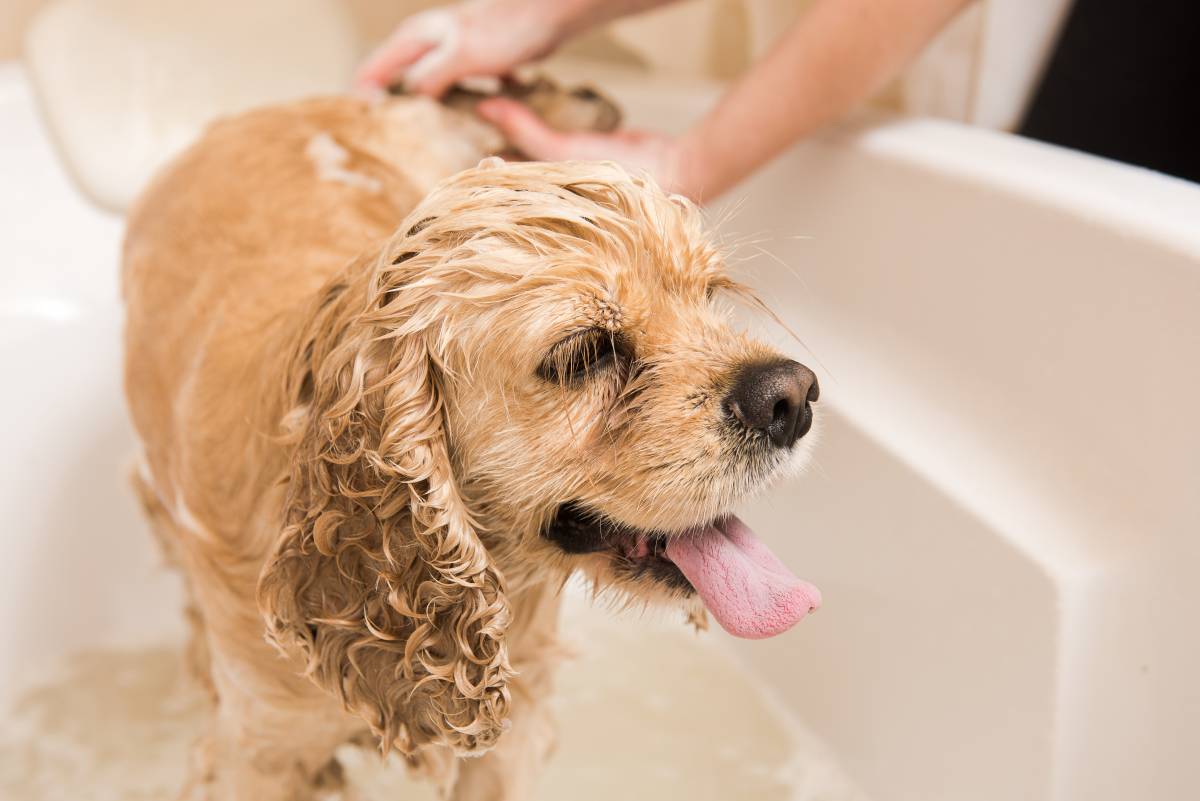
How to groom a dog at home
Read more
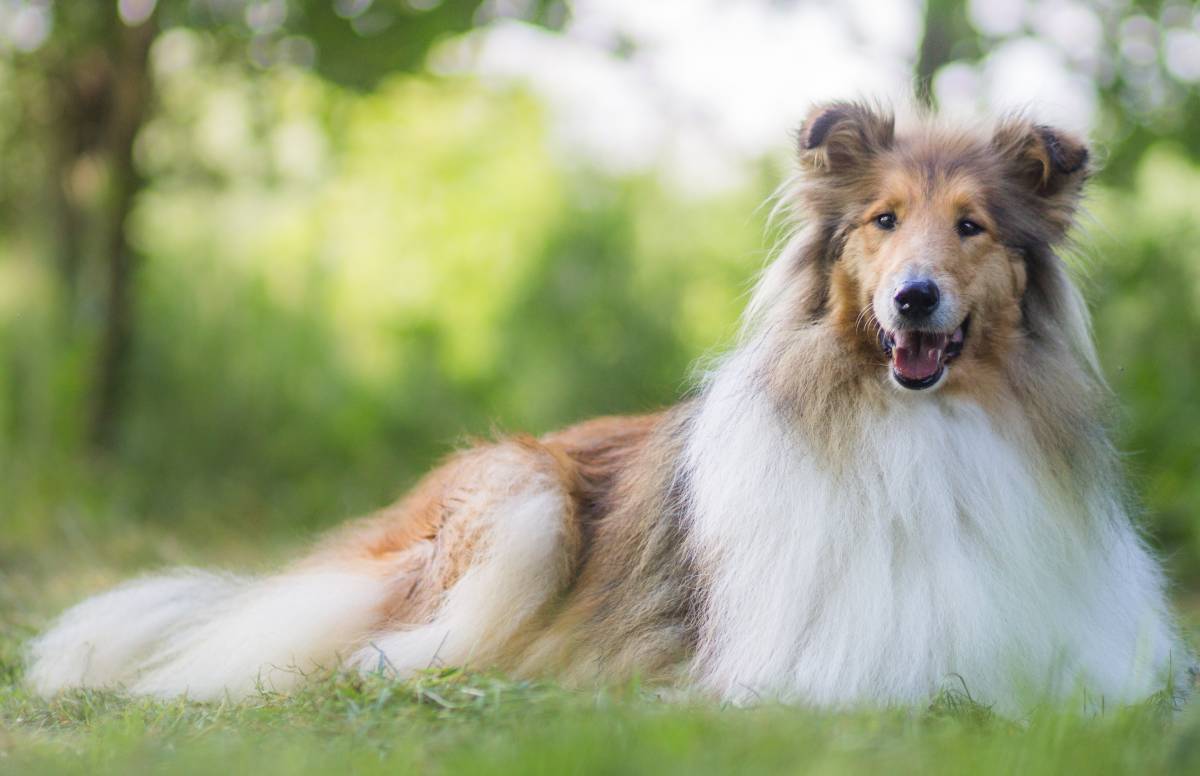
How to groom a long-haired dog
Read more

How to become a dog trainer
Read more
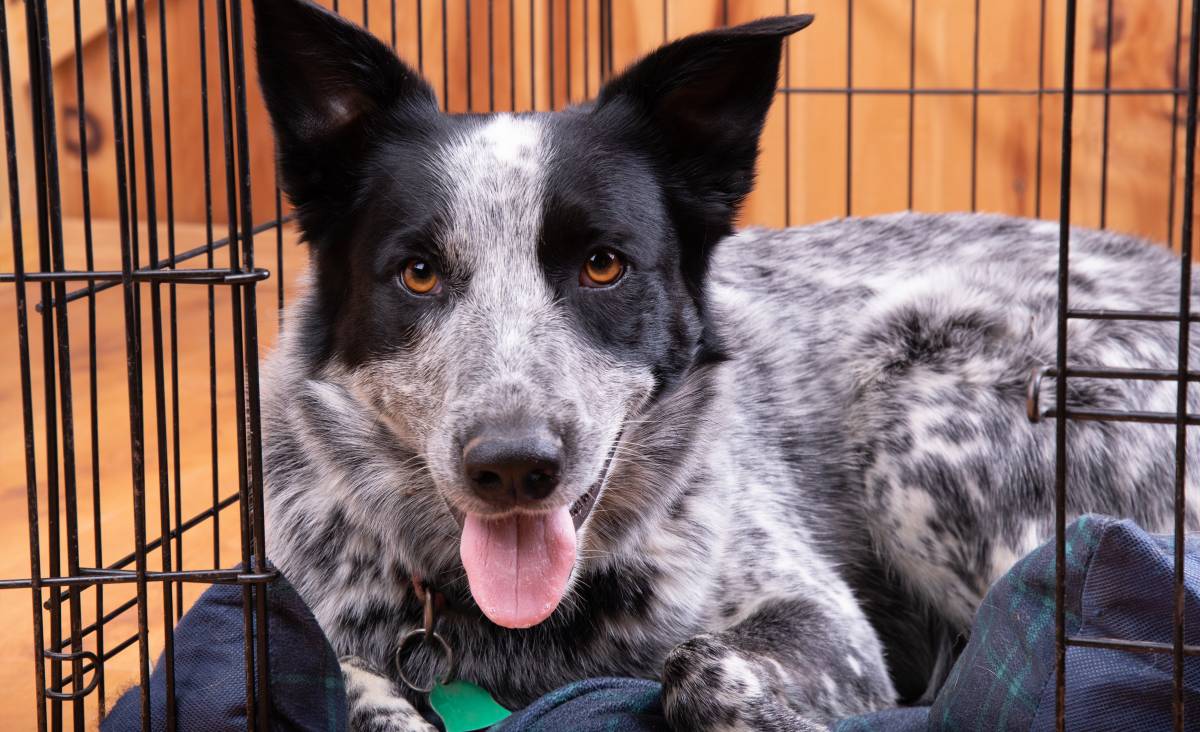
4 Steps to crate training a rescue dog
Read more
Related price guides
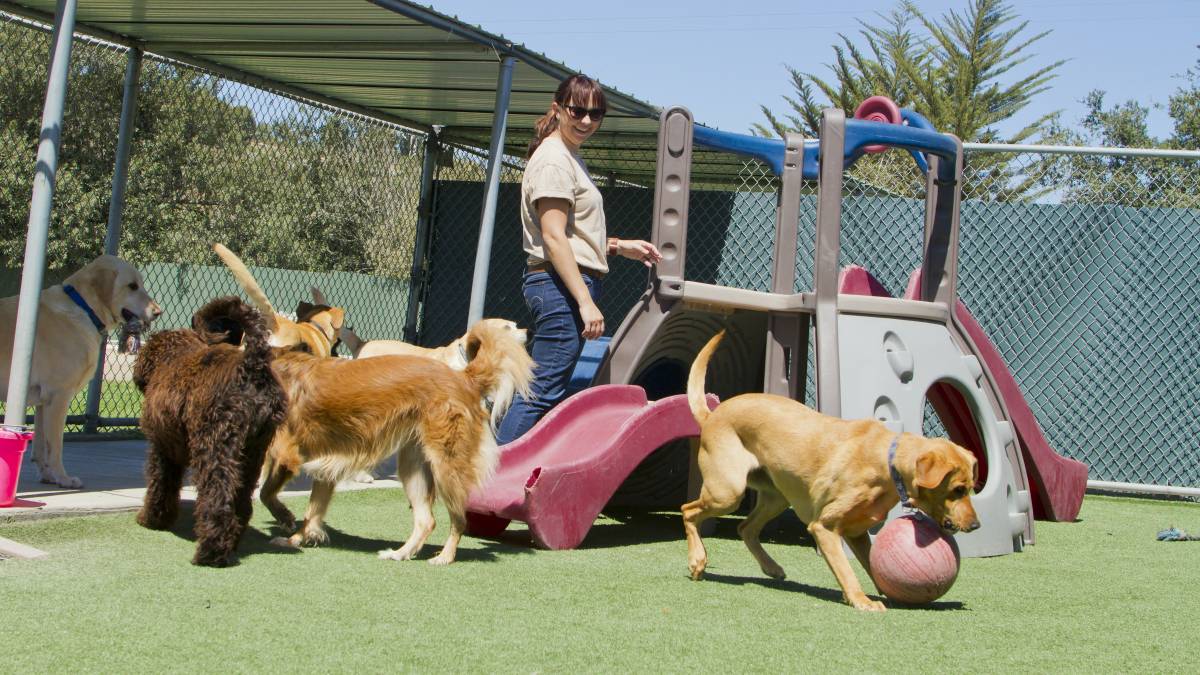
How much does dog day care cost?
Read more

